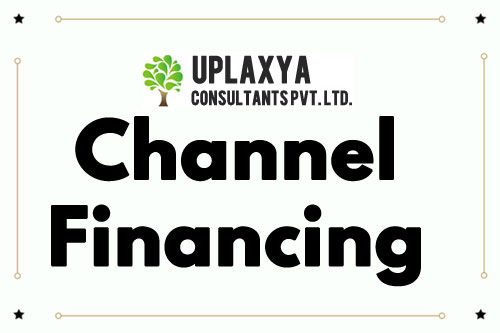
What is Channel Financing
- Discounting of trade bills drawn by you and accepted by the dealer/distributor
- Limited overdraft facility to the dealer/distributor for his business dealing with large corporate
Salient Features:
It is meant for financing sale of equipment, vehicles and other commodities in the hands of the first stage Distributor / Dealer. This finance is applicable only to sales against sight-payment (i.e. not on credit terms) at the hands of first stage Distributor / Dealer. It is a sort of transit finance in the sense that the goods may be in transit when finance request is made under the scheme. The manufacturer is funded for his sales (supply of equipment, vehicles, commodities etc) whereas the first stage Distributor / Dealer is financed for his purchase through the UCPL.
Purpose
To finance the purchase of commodities from manufacturer / stockists for first stage dealers only.
Eligible Commodities
- Any “commodity” supplied directly by, either the Manufacturer or the Stockist (who procures commodities from the manufacturers / imports from abroad).
- The “commodity” should be that of a reputed brand.
- The “commodity” should be fast moving consumer goods category.
- Examples: Vehicles, Petroleum products, Biscuits / Confectioneries, Edible oils, Fast Moving Consumer Goods (FMCG), etc., all of reputed brands.
- (The underlying feature is, goods are normally not sold on credit terms by the manufacturer / stockist).
Getting the funding is only one benefit, though a major one, of finding and working with the right channel finance provider:
- Faster Upfront Payments – Sellers receive payment for a transaction within a relatively short, proscribed time directly from the channel finance provider. A number of providers are able to integrate directly with a seller’s point of sale system (POS), thereby streamlining and speeding up the payment process.
- Turnover of Credit and Collections – The biggest risk to SMEs (which many of these network sellers are) is not receiving payment for goods sold. When the provider takes responsibility for confirming the credit-worthiness of an account and collecting the payments due, the result for the seller is…
- Lower Administrative Costs – Consider how much time is spent on verifying a customers’ worthiness and chasing payment. That’s not the best use of employee time; instead, with the risk management being assumed by the finance provider, a seller’s employees can now focus on higher value tasks that lead to building a better business.
- Better Customer Relationships – With the finance provider acting as the middleman, any disputes or payment issues are between the provider and the buyer, thus removing the potential for customer dissatisfaction with the seller. Better relationships often lead to more business.
- 24/7 Visibility – This is a benefit that all network participants (manufacturers, sellers, and buyers) can take advantage of. With incoming and outgoing payments recorded in full with a complete audit trail, all three parts of the network can stay up-to-date on cash flow throughout the network. Visibility and knowledge allow each member of the network to optimize their working capital.
- Elimination of Paper and Manual Processes – This is another benefit that all network members can realize. Since all of the processing of POs and invoices is automated and completed through the finance provider’s solution, the burden, inefficiencies, and potential mistakes that can result from human error are gone. The result is a reduction of administrative costs for every participant, across the board.

Channel Financing Objective
- Audited P&L and balance sheet along with tax audit reports for Last 3 years
- Constitution deeds (Article of Associates, Partnership Deed etc.)
- Last 3 years IT returns of Dealer and promoters/guarantors
- Bank statement for the last 6 months – not older than 3 months
- AOF and KYC documents as applicable
- Details of all borrowings from Banks/NBFC etc.
- Signed and accepted Sanction Letter
- Execution of Loan Agreement
- Undated cheque for recourse
- Personal Guarantee of the Proprietor /Partners / Director
- DP Note, DP Letter, Letter of Continuity
Commodities procured from the manufacturer/stockist under each of the invoice (Trust period: Date of invoice to date of receipt at the warehouse of the borrower). The invoice should bear particulars of our Bank’s charge over the commodities and Book-Debts with a cover period of maximum 90 days (applicable only for select commodities which are sold not to the actual user but to another sub-dealer). The quantum / value of collateral need not be the deciding factor for credit decision
Any quantum of legally enforceable asset / property (movable / immovable) according to the discretion of the sanctioning authority for each borrower and from time to time. Additionally Personal Guarantee of any partner(s) / director(s) / according to the discretion of the sanctioning authority for each borrower and from time to time.
ECB Frequently asked questions (FAQ)
Auction participants purchasing materials through Recommendation & comfort letter from the manufacturer.
Buyer finance limit is based on the annual purchase value through e-auction from metal junction / coal-junction along with the profile of the auction participant.
It is primarily an unsecured loan facility.
